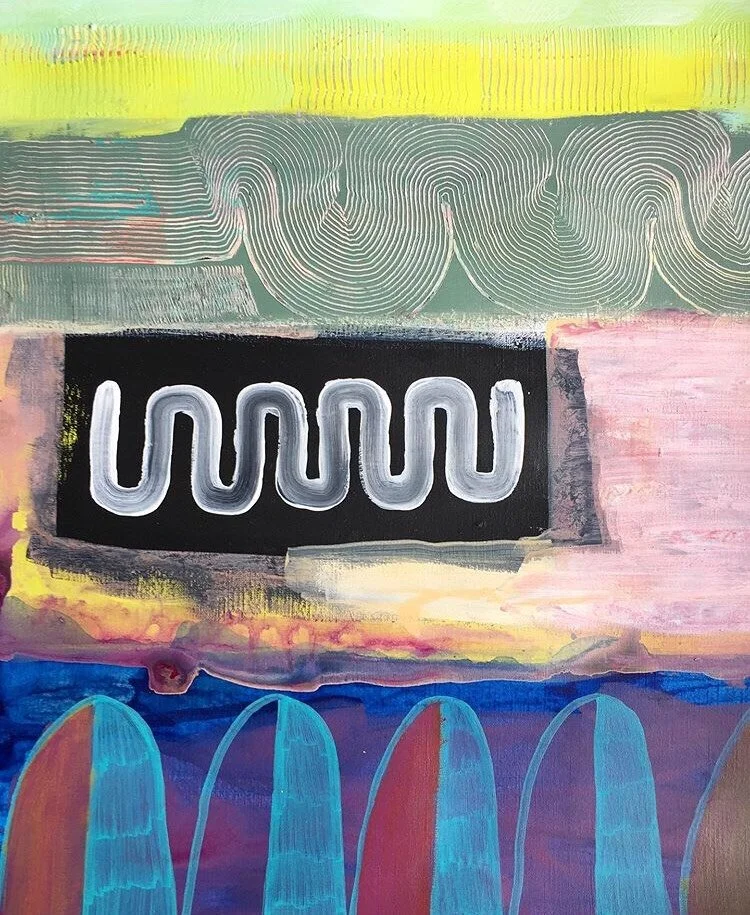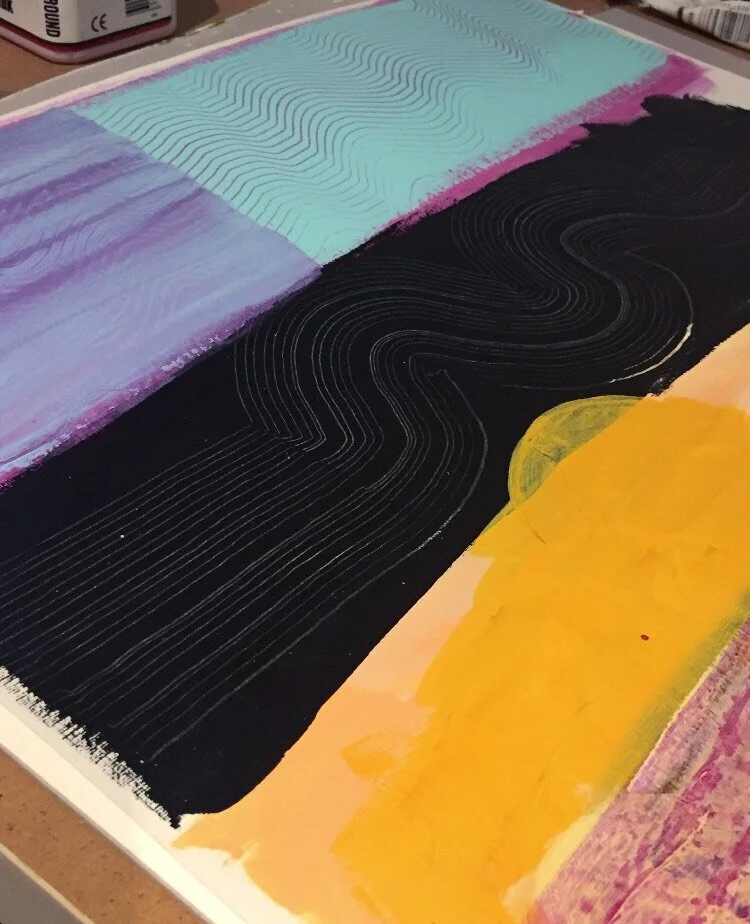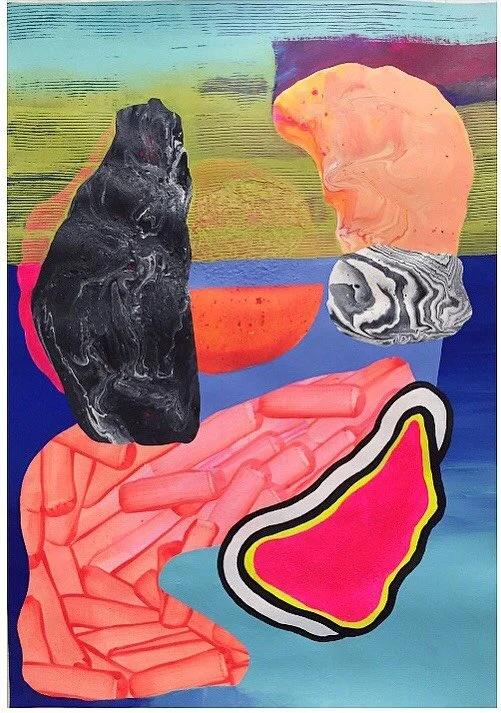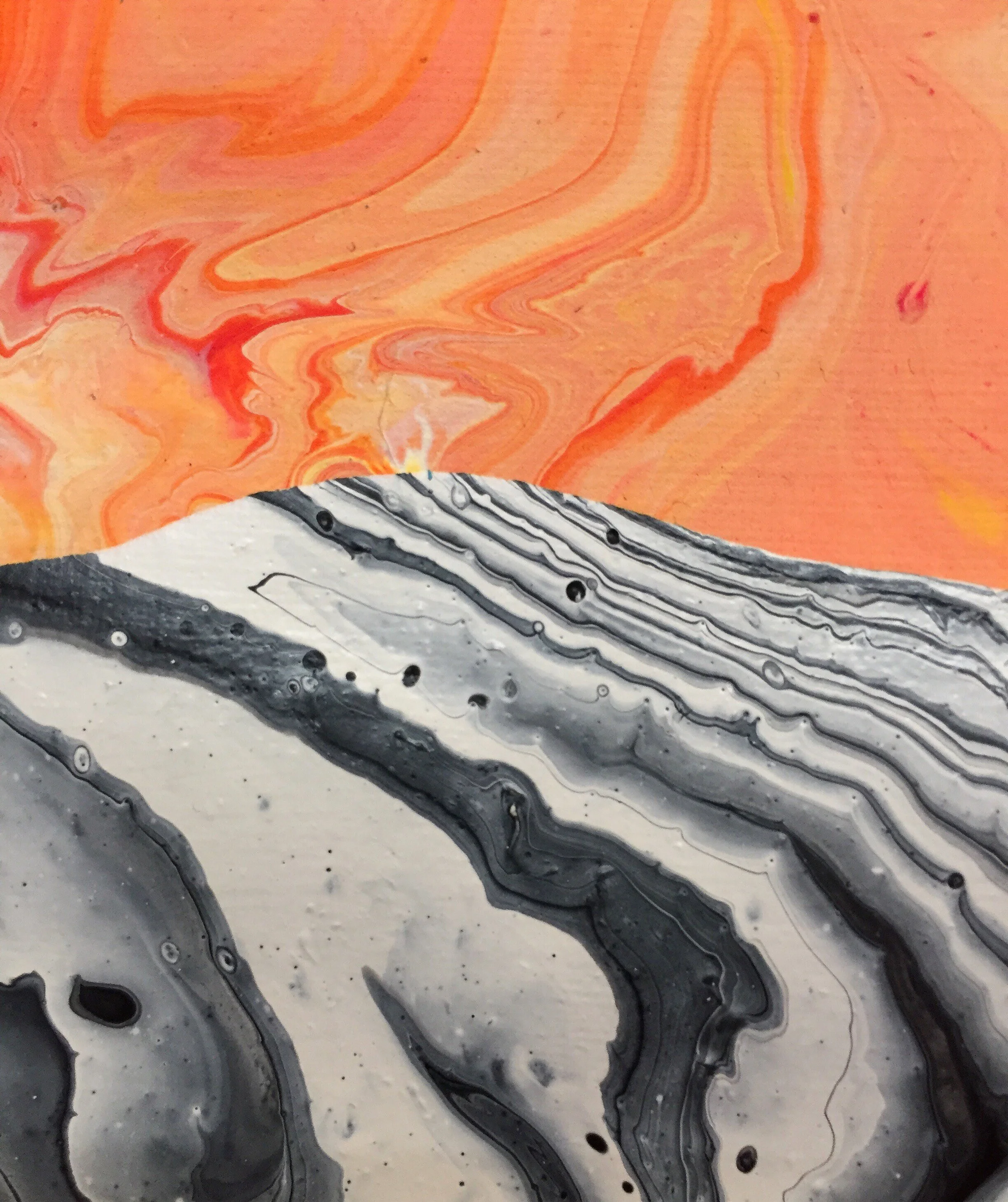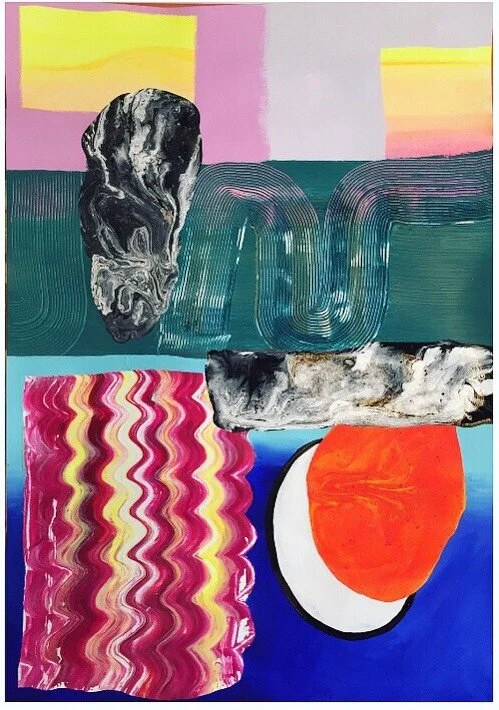From berets to balance: Felicity Burke has always been an artist, even when she’s not
When Felicity Burke first walked into her studio and saw how dirty the floors were, she knew it was the place for her. It was one of 40 workshops in a warehouse in Brunswick, and she was struck by the smell of oil paints and clacking sewing machines.
Having recently transitioned to a freer style of artwork, the space – stained with paint-splatters of past artists – was the perfect fit.
It was a stark difference from working carefully on a drop sheet in a room at her Mum’s house. The mess in the studio liberates her to freely pour paints, splashing and scraping the material on a canvas, ignoring any of her own splatters that weave into the floor’s tapestry of creative spillages.
Felicity, who primarily produces abstract paintings of late, is fascinated by nostalgia and has a deep love for paint. She derives inspiration from things she finds beautiful, from architecture to vintage album covers.
A true Libra (the star sign is depicted by a set of scales), balance is important to Felicity in both her artwork, and in her life more broadly. She juggles working as an artist with a 9 to 5 job: Sponsorship and University Services Manager at the news analysis website The Conversation.
Present and professional in the office; the paint stains occasionally visible on her hands are the only link to the artistic sphere of her life. Out of necessity, she keeps her day job and art life separate – she says if she didn’t she’d be terrible at her job.
But when I asked Felicity if “artist” is at the forefront of her identity, she didn’t hesitate for a second.
“Yes, 100%, I wouldn’t even question it. It’s always been that way,” she told me.
This means it can sometimes be difficult for Felicity to pull herself away from a piece she’s been working on over the weekend come Monday morning.
“I am very dedicated to my job, but I feel like a phoney sometimes,” she says.
“It’s still kind of funny that I’m in an office. I’ve always thought of myself as this kind of all-over-the-place artist. That’s just what I want to do and that’s my identity.”
When I asked if she could pinpoint when she assumed “artist” as a part of her identity, she responded that she couldn’t pinpoint when it wasn’t.
Dating back as far as early primary school, Felicity recalls visiting galleries with her Mum on weekends, drawing cartoons for her friends and being pictured in paint-coated smocks.
In fact, in grade two when she was asked to stitch a portrait of what she wanted to be when she grew up into brown mesh, she stitched herself in a beret holding an art palette.
“Because every artist has to have a beret obviously,” she says and laughed.
This isn’t something she can just switch off. The notes app on her phone is filled to its virtual brim with visual ideas that unpredictably rear their heads.
“If I’m honest, I think about art all throughout the day. I’ll see something in my head and get a visual idea. I’ll write it down and it happens anywhere, anytime. But then I’ll put it to the side and concentrate on what I’m working on,” she says.
Having worked with Felicity for the better part of a year at The Conversation, I can confidently say she seems to juggle the many spheres of her life with grace – she’s present, effervescent and focussed.
“I think it’s good for my brain to have a break from art, just as my brain needs a break from my 9 to 5 job,” Felicity told me.
But it’s not just a balanced lifestyle that’s important to Felicity, balance also influences how she constructs her canvas. In her abstract works she measures balance largely by instinct, and she says she doesn’t feel like a piece is finished unless it’s balanced.
“I’ll see something I find beautiful and I’ll want to remember it. This is sort of my way of documenting it.”
And the self-proclaimed perfectionist believes transitioning from more detailed, symmetrical pieces to open, unstructured art over the past year and a half has been freeing. It has permitted her to grow as an artist.
“I got to a point with those really detail-oriented pieces where I was finding I didn’t know when to stop. I’d work on a piece for months at a time. I felt I’d exhausted that style, because I felt I couldn’t grow beyond what I was painting in that way.”
Nostalgia and memories are also important parts of Felicity's work. “I’m sort of obsessed with nostalgia. I see my paintings as collections of things I’ve seen – anything from album covers to really old school shop signs with hand-done typography and lettering.”
Beyond abstract art, Felicity derives inspiration from the side of a building, the shape of something, nature or even music.
“When I look at my pieces, the best way I could describe them is that they’re a collage of little moments in time of things I’ve seen and taken something from, whether it’s colour, texture or lines.”
Because of this, travel often shapes her work.
Felicity recently returned from a trip to South America and, rather than a cheap souvenir, she brought home the images of derelict buildings with their bright coloured paint chipping away.
“I’ll see something I find beautiful and I’ll want to remember it. This is sort of my way of documenting it.”
Though she doesn’t just create one particular type of work, she says free-flowing art is serving its purpose for her right now, in a way her past work did not.
“It feels really, really good and I can’t imagine going back to that style,” she says.
“I think the work I’m producing now is better than what I was producing six months ago. Otherwise, what’s the point?”
Not one to limit herself, Felicity is happy to rework past pieces she emotionally moved on from, painting over a canvas she thought she had finished.
“When I was at art school they were like ‘never ruin an old work, you never know.’ But I think it's fine to do that. If I’ve moved on from it and am comfortable painting over it and starting again, then I create something else I find more beautiful.”
When Felicity studied Fine Arts at Monash University, she was encouraged to pursue conceptual artwork, like art installations full of metaphors.
“I struggled with that. I think it’s ok to produce what you want and what feels good. So I was sort of fighting with that while I was at uni.”
While many other students produced these pieces for their final assessments (concrete being the popular material to work with at the time) Felicity remained committed to painting, despite its simplicity being frowned upon.
“I just love paint so much. It’s not that I had this strong sense of ‘screw the system, I’m so good that my work prevails the rules’, it’s more that I just love paint as a material and a medium and there’s so much you can do with it. It’s endless and I’m obsessed with that.”
Her passion is obvious when she speaks about her art. She describes her innate connection to it as a necessary aspect of her life.
“Just like musicians and writers or doctors who are passionate about medicine – that’s what art is to me and always has been.
“It’s just something I have to do and I’m so much happier when I’m doing it.
Tessa Ogle is a writer from Melbourne, a caffeine addict and is partial to a pun or two.
